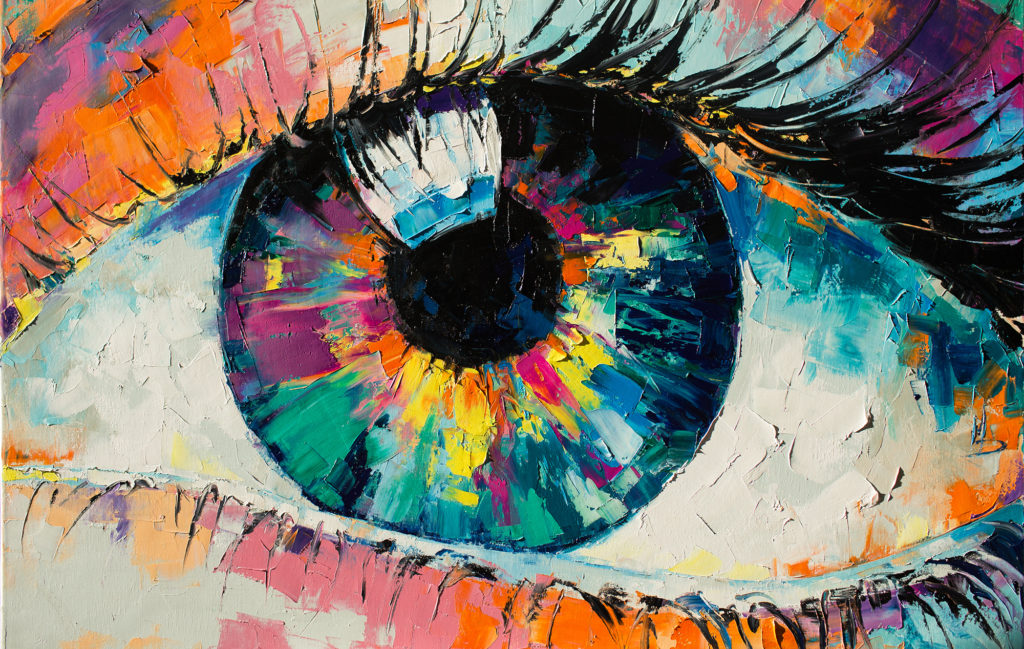The Advancement of Trump Art: From Very Early Reviews to Contemporary Perspectives
The Advancement of Trump Art: From Very Early Reviews to Contemporary Perspectives
Blog Article
Exploring the Diverse Globe of Artistic Expression: From Surrealism to Abstract Realism
In the world of artistic expression, from the dreamlike landscapes of surrealism to the detailed play of light and kind in abstract realistic look, musicians have continually pressed the borders of creativity and imagination. Each activity holds an one-of-a-kind lens where the world is watched and translated, offering a look right into the midsts of human emotion, perception, and believed. As we discover the diverse globe of art, we exist with a tapestry of designs, strategies, and viewpoints that challenge our understanding and prompt contemplation. The trip via these diverse types of imaginative expression promises to unwind an abundant tapestry of visual narration and intellectual inquiry that mesmerizes the mind and mixes the soul.
Surrealism: Unleashing the Subconscious
Surrealism, an avant-garde creative motion of the 20th century, looked into the depths of the subconscious, revealing a globe of dream-like images and unusual associations. Spearheaded by artists like Salvador Dali, René Magritte, and Joan Miró, Surrealism sought to challenge the conventional ways of comprehending and seeing art. With methods such as automatism and dream analysis, Surrealist artists aimed to take advantage of the unconscious mind to reveal surprise facts and desires.
Among the crucial aspects of Surrealism was the focus on the unreasonable and the uncanny. By incorporating unexpected components in their jobs, Surrealist artists intended to produce a sense of disorientation and surprise in the viewer. This interruption of reasoning and reason was implied to provoke a deeper expedition of the subconscious and the enigmas of the human mind.
Abstract Realism: Redefining Perception
Challenging traditional artistic borders, Abstract Realistic look redefines perception through the blend of identifiable aspects with abstract forms. This cutting-edge technique to art integrates the representational accuracy of realistic look with the innovative freedom of abstraction, supplying customers a special visual experience that motivates them to examine their assumption of truth.
In Abstract Realism, musicians strive to record the essence of their topics while likewise infusing their job with a sense of depth and intricacy via abstract elements. By blending the familiar with the unfamiliar, these musicians invite target markets to engage with their items on multiple degrees, urging them to discover the nuances of form, appearance, and color.

Cubism: Fragmentizing Truth
Utilizing geometric kinds and fragmented viewpoints, Cubism revolutionized the creative representation of truth in the very early 20th century. This technique not just deconstructed truth yet also emphasized the flatness of the canvas, paving the way for future abstract art movements.

Cubism can be categorized into two primary phases: Analytical Cubism, defined by monochromatic color design and intricate, fragmented types; and Synthetic Cubism, which integrated collage components and brighter shades right into the structures. With these unique phases, Cubism influenced not only painting yet additionally architecture, design, and sculpture. trump art. Its impact resounded across the art world, inspiring musicians to check out new ways of interpreting and standing for the globe around them
Expressionism: Feelings on Canvas
Checking out the midsts of human emotions through dazzling and expressive brushstrokes, Expressionism became a profound artistic activity in the early 20th century. Unlike previous art activities that focused on depicting the outside look at this now world, Expressionism explored the interior realm of the musician's mind, intending to evoke raw emotions and provoke natural reactions from viewers.
Expressionist musicians, such as Edvard Munch, Egon Schiele, and Emil Nolde, turned down typical ideas of appeal and realistic look for misshaping form and shade to convey subjective feelings. The usage of exaggerated brushwork, strong shades, and distorted numbers aided produce a sense of anxiousness, alienation, or interest in their works.
One of one of the most famous examples of Expressionism is Munch's "The Scream," which records the extreme stress and anxiety and misery of contemporary life with its swirling, distorted figure against a blood-red sky. With their psychologically billed works, Expressionist artists looked for to test conventional creative standards and provide a window into the unstable depths of the human spirit.
Contemporary Art: Evolving Point Of Views

Among the specifying qualities of contemporary art is its continuous advancement and capacity to adjust to changing social landscapes. Musicians are progressively including technology into their technique, obscuring the lines click to find out more between the digital and physical worlds. This blend of tools permits innovative ways of storytelling and engaging with audiences in a much more interactive way.
Additionally, modern art often serves as a platform for social commentary, dealing with pressing issues such as identity, politics, and the environment. Musicians are utilizing their job to trigger important conversations and prompt thought, clarifying the complexities of the world we live in. As perspectives remain to develop, contemporary art continues to be a significant and vibrant force in shaping our social landscape.
Verdict
Finally, the globe of imaginative expression incorporates a wide variety of designs and motions, each with its very own distinct strategy to communicating definition and feeling. From surrealism's expedition of the subconscious to abstract realism's redefining of understanding, and from cubism's fragmentation of fact to expressionism's representation of emotions, art continues to evolve and challenge perspectives - trump art. Contemporary art mirrors the ever-changing globe we reside in, offering brand-new means to interpret and recognize the intricacies of our truth
As we explore the multifaceted globe of art, we are provided with a tapestry of styles, strategies, and approaches that challenge our understanding and prompt consideration. Its influence reverberated throughout the art world, inspiring musicians to check out brand-new methods of representing the globe and interpreting around them.

Report this page